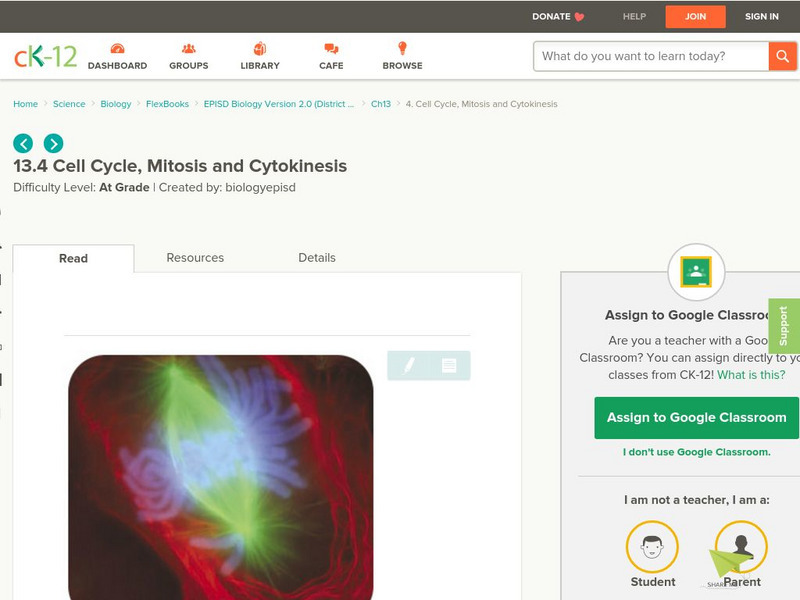Sophia Learning
Sophia: Plant Kingdom: Algae: Lesson 1
This lesson will explain the characteristics and function of algae plants. It is 1 of 3 in the series titled "Plant Kingdom: Algae."
Sophia Learning
Sophia: Plant Kingdom: Algae: Lesson 3
This lesson will explain the characteristics and function of algae plants. It is 3 of 3 in the series titled "Plant Kingdom: Algae."
BiologyWise
Biology Wise: Endoplasmic Reticulum Analogy
The endoplasmic reticulum is compared to a manufacturing plant with an assembly line to help students understand the functions of this important cell organelle.
BiologyWise
Biology Wise: A Brief Comparison of Plant Cell vs. Animal Cell
Presents labeled illustrations of a plant cell and an animal cell which demonstrate the parts that are common and different. This is followed by a discussion of their similarities and then of their differences.
CK-12 Foundation
Ck 12: Cell Cycle, Mitosis and Cytokinesis
[Free Registration/Login may be required to access all resource tools.] A description of the stages of eukaryotic cell division, a summarization of mitosis and the metaphase plate, an explanation of the function of the centrioles and the...
BiologyWise
Biology Wise: Rough Endoplasmic Reticulum and Cell Metabolism
The characteristics of the rough endoplasmic reticulum are described and its role in protein synthesis, including creating proteins, folding them, transporting them, and checking them for quality.
Khan Academy
Khan Academy: Cell Cycle Checkpoints
Learn how cells use checkpoints to regulate the cell cycle. This article provides an overview of cell cycle control, outlining the factors that influence a cell's decision to pause or progress at each checkpoint.
Soft Schools
Soft Schools: Comparing Plant and Animal Cells Quiz
Take an interactive quiz over plant and animal cells. After completing the quiz, check your score, and then revisit any incorrect question for further review.
Science Education Resource Center at Carleton College
Serc: Observe, Describe, Compare and Contrast Cells
This investigation allows students to observe cells from multiple sources. Plant, animal and bacterial cells will be observed as well as cells from multicellular organisms and single-celled organisms. After providing written descriptions...






